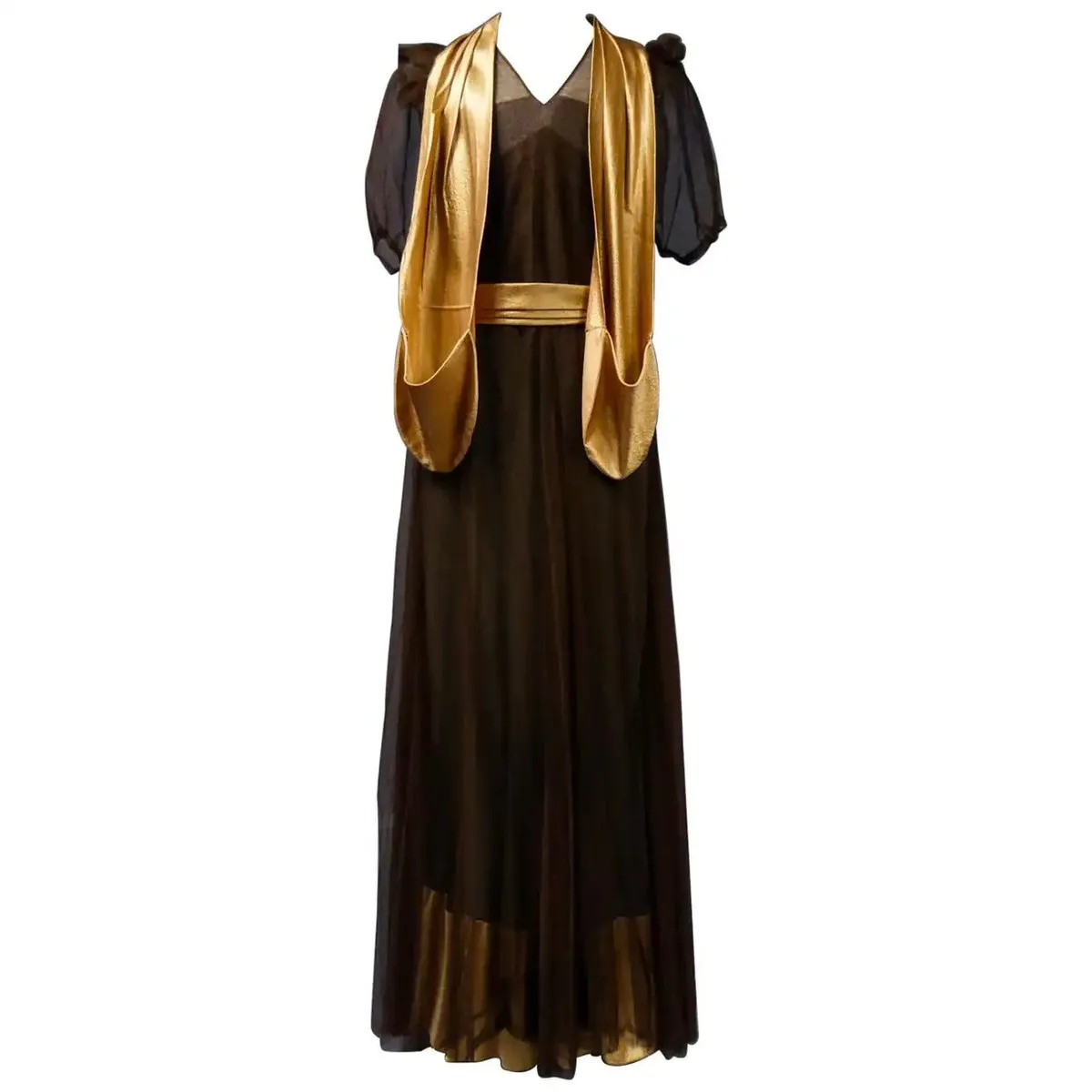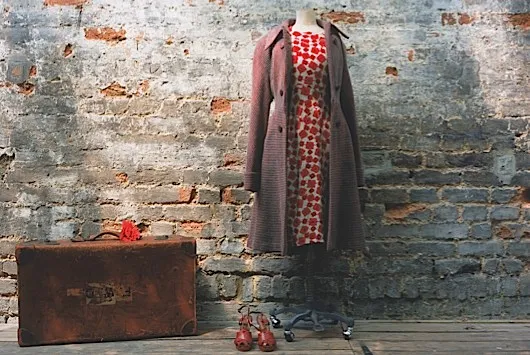Each decade brings with it a raft of new fashion trends. Here, we run you through the timeline of the great fashion eras – and the iconic items of clothing from each decades that have gone down in history. If you're a shopping fan, check out our round-up of the best places to buy vintage fashion in the UK.
Vintage fashion from the 1920s & 1930s
Some of the most collectable looks of the 20th century include the beaded flapper dresses of the 1920s and the sensuous bias-cut silk gowns of the 1930s. Naturally, designs from the 1920s are hardest to find, as they were often made from delicate fabrics that damage very easily and have often not stood the test of time. Knee-length gowns were de rigeur, when women were encouraged to bind their busts in order to attain a boyish figure. Simple drop-waisted shift dresses from the Twenties can still be bought. Expect to pay around £400, or even more, for a Twenties piece in good condition. For a pristine beaded flapper evening dress though, expect to pay in excess of £1,000. It is possible to have garments restored, but can prove costly. Take the advice of the dealer if in doubt.
Moving on to the 1930s hemlines dropped to the floor and womanly curves were shown off in bias-cut fabrics. Eveningwear featured stunning silk and satins, covered buttons, the glitter of lurex and built-up shoulders – think of Hollywood stars such as Greta Garbo. Thirties frocks are much easier to find – you can pick up a Thirties evening gown for around £300 (a couture piece may cost at least £1,000).

Daywear is more low-key and affordable, with cotton dresses in softly draping fabrics in sweet floral prints. Expect to pay upwards of £60. As with all vintage clothing, store items in acid-free paper to avoid damage.

Vintage fashion from the 1940s and 1950s
There is a wide range of Forties styles on the market, as dealers often travel to the US to buy pieces. American womenswear was more colourful and glamorous than British fashion, which was restricted by wartime rationing, so it’s possible to find some stunning imported outfits. Wool skirt suits with tailored jackets and smart pencil skirts can be found for around £200, while a day dress can cost from as little as £40.
‘I predict that 1940s skirt suits will be the next big thing, as there were so many modern versions in the designers’ autumn collections,’ says Samaya Ling, a Bristol-based vintage clothing dealer.

‘The Forties and Fifties are great for women with curves,’ says Jane Appleby-Deen, a vintage clothing specialist in London. ‘ The nipped-in waist, defined shoulders and full skirts create a beautiful hourglass shape.’ But, as she adds, ‘there is a decade for every figure.’
‘This summer, 1950s printed cotton day dresses were very popular,’ says Samaya. ‘Summery day dresses can still be worn in the winter when teamed with boots or thick tights.’
Look out for dresses bearing the Horrockses label. During the 1950s, this Preston-based firm produced floral print dresses that are timelessly stylish and of the best quality. If you’re lucky, you can find one for upwards of £90, although they can go into the hundreds.
Unattributed Fifties day dresses can be found for £50-£60. Evening dresses from the period can be bought for a couple of hundred pounds. Even a Christian Dior ready-to-wear dress is surprisingly affordable. If you went into a boutique and bought a new Dior evening dress it could cost you thousands, but you can pick up a vintage piece for £400-£500.
If you're wanting to create a full vintage look, check out our guide to buying vintage jewellery.
Vintage fashion from the 1960s
Bold colours and simple lines sum up 1960s fashion, evident in both daytime fashions and eveningwear. Modern man-made fabrics in blocks of colour such as red, orange and pink still look up-to-date. Necklines embellished with crystals and coloured glass add interest. When buying, avoid examples with stones missing unless you’re prepared to have them restored.

Fashion from the 1960s is largely undervalued, perhaps because it requires an adventurous wearer. Unattributed 1960s styles can be found for under £50. Key Sixties pieces include colourful, cropped jackets, collarless coats and sleeveless dresses (look out for Pucci, Cardin and Courreges, which would cost upwards of £200).
With so much choice, you’ve almost got to think twice about buying something new these days. If you look, you can get a better made original, with quality fabric, for less money than you’d pay for new. You won’t bump into anyone else wearing the same piece either. Next time you have a special occasion to attend, why not take the vintage option?
View some of the most iconic pieces of vintage fashion at the UK's best fashion museums.

Vintage accessories
Bags are an easy and inexpensive way to introduce a bit of vintage glamour into your wardrobe. A well-made leather handbag can be snapped up for as little as £40. If you want a vintage designer bag, try looking at auction. Christie’s regularly include labels such as Hermes in its sales. Although some have estimates in the £200-£300 bracket, iconic bags can fetch tens of thousands of pounds. Shoes are a tricky area for the ‘buy to wear’ collector. With this autumn’s trend for block heels, look out for 1960s and 1970s shoes (from £50) that are fairly easy to find in good condition – they’re very wearable, too.